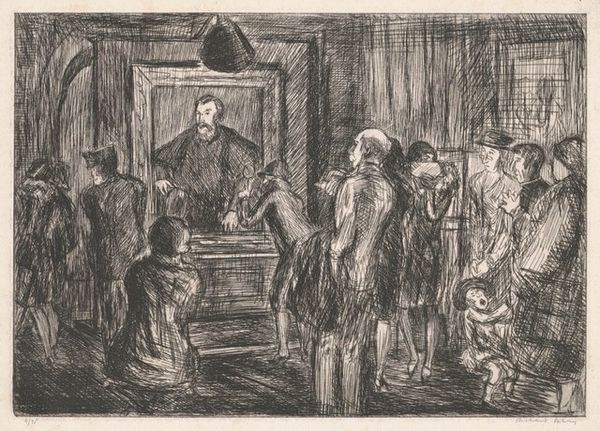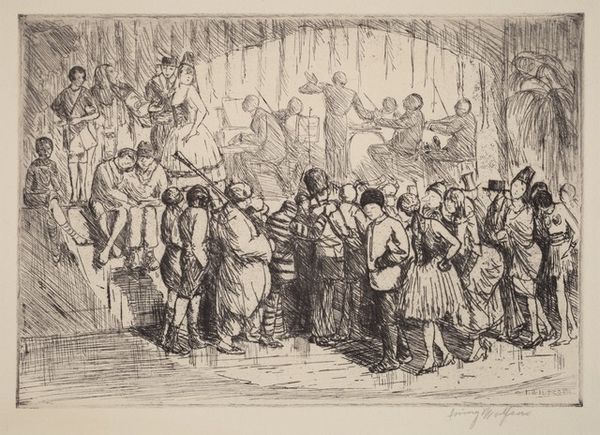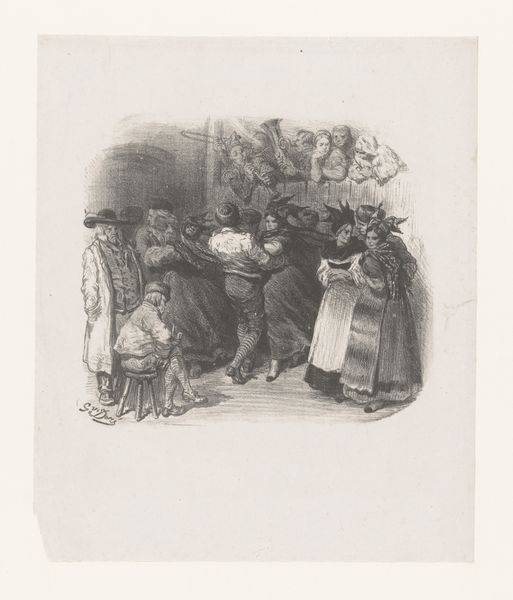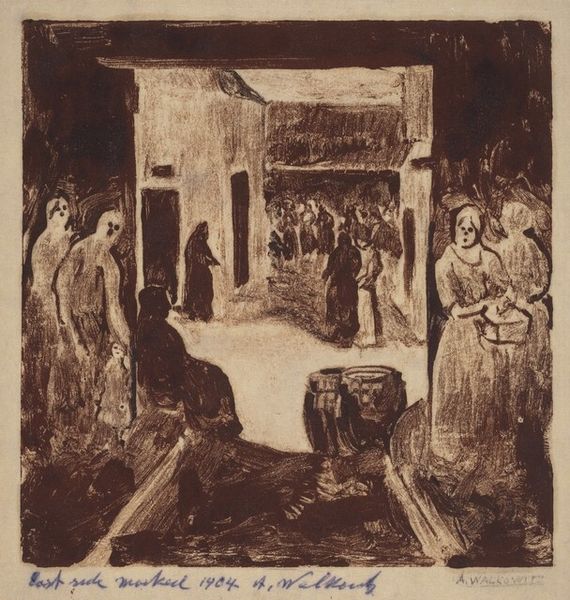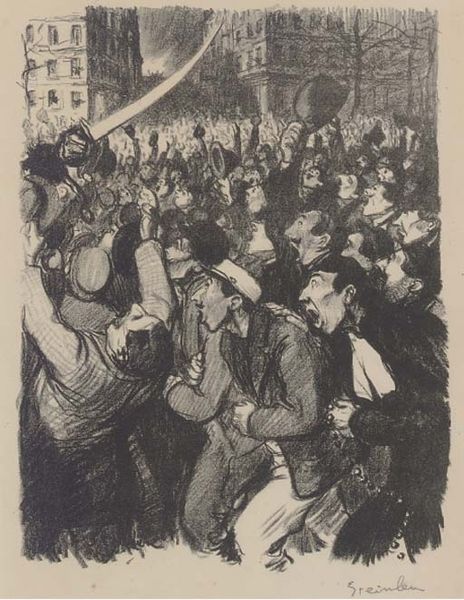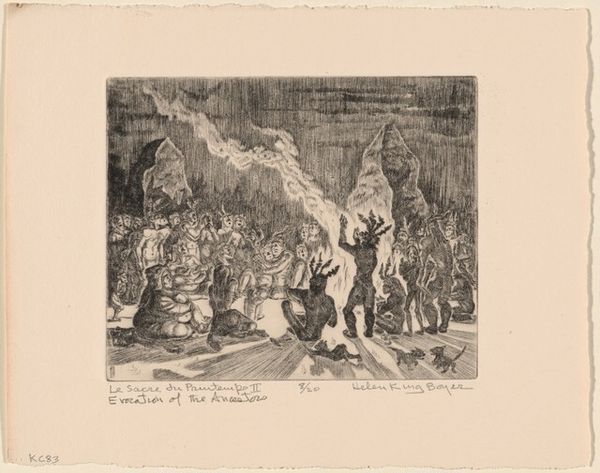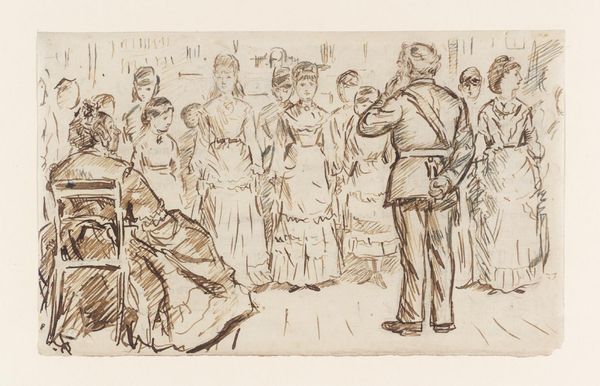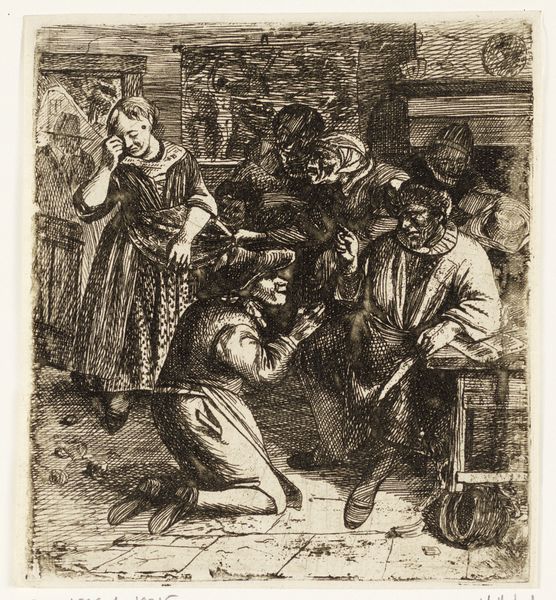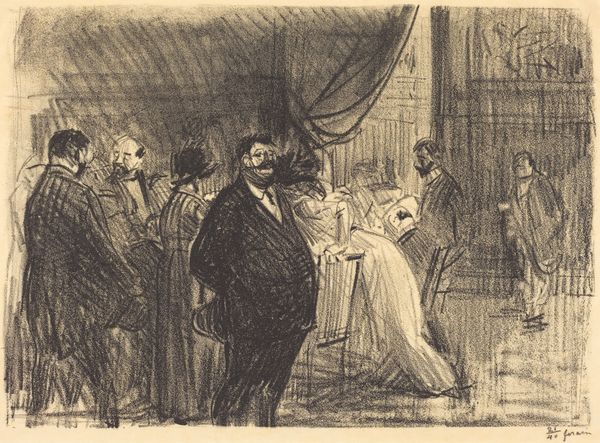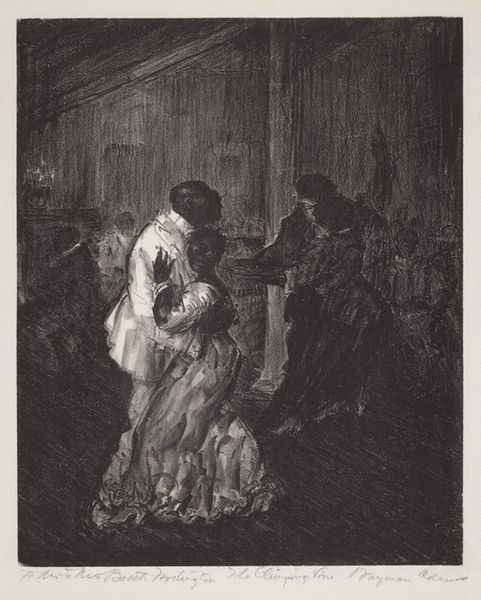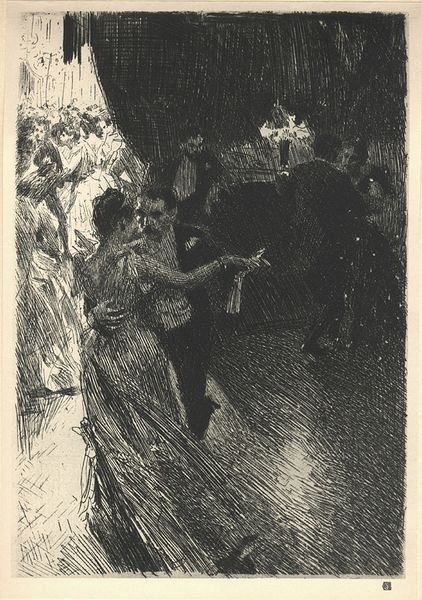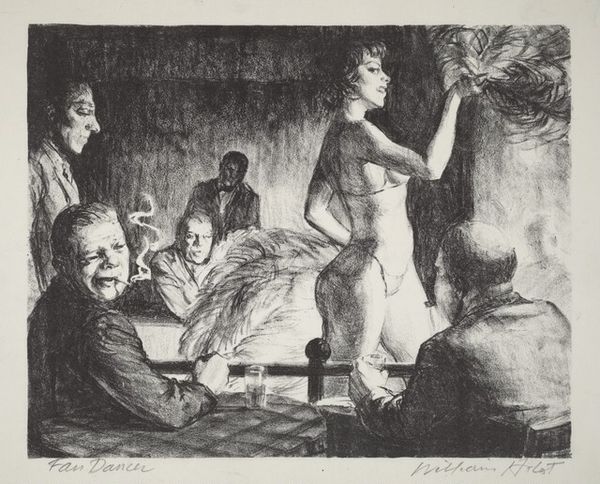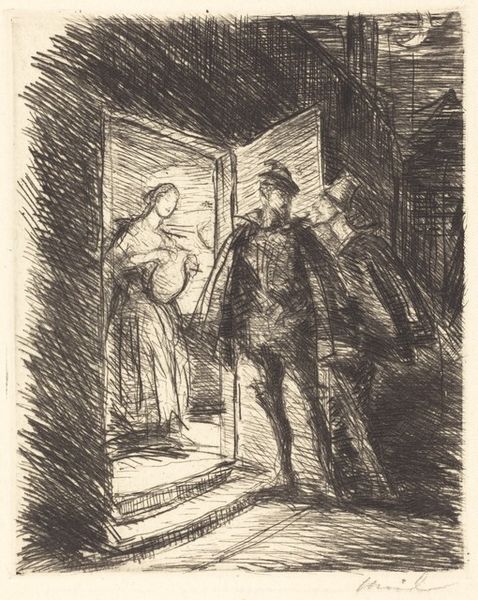
drawing, print, etching, ink
#
pencil drawn
#
drawing
#
art-nouveau
# print
#
etching
#
pencil sketch
#
charcoal drawing
#
figuration
#
ink
#
pencil drawing
#
pen-ink sketch
#
symbolism
#
pencil work
#
genre-painting
Copyright: Public domain
Curator: Here we have Théophile Alexandre Steinlen’s "Chanson du Soir," created in 1913. The artwork is an etching, and print depicting a figural scene. Editor: It's… wonderfully claustrophobic, isn't it? That dense, scratchy linework creates such a palpable sense of crowding and almost grim festivity. The faces are obscured, as if hidden within the dense crowd. Curator: Absolutely. The use of etching in this work amplifies the overall thematic elements, adding layers of meaning to Steinlen's art. Consider, etching as a medium is often associated with dissemination; therefore, it highlights how musical encounters are public rituals that gather various members of a social ecosystem into an event that, as this work portrays, can either bring comfort or angst. Editor: So, in that reading, the diffused light is not merely illumination, but the idea of a spotlight or surveillance of working-class leisure activities. I suppose the title – Evening Song – hints at that melancholy or even the potentially weary role of music. Are the people gathering seeking comfort or forced camaraderie in a setting that makes it almost difficult to find joy? Curator: Yes, that reading is absolutely valid and likely intentional. It captures the ambivalence that the symbolists sought to depict when discussing modern working-class realities and spaces. Notice how there's an abundance of people facing one another in dialogue, however the density of lines suggests an entrapment of those faces or emotional expressions to emerge, suggesting the symbol of community as also a burden. Editor: Interesting. This reminds us that visual representation is a constructed dialogue and cultural symbol that allows an artist to engage with contemporary culture. Steinlen really manages to push etching past conventional representation to become symbolic of larger anxieties around the changing landscape of the early 20th century. Curator: Precisely. The choice of the medium is far from arbitrary. The etching technique seems particularly effective for portraying both a sense of collective energy and the underlying social unease inherent in a seemingly candid depiction of working-class life. It's a very thought-provoking approach that shows social anxiety that comes with social gathering. Editor: Agreed. This print is a powerful commentary—a convergence of artistry, history, and symbol all meticulously etched onto the printing plate. Curator: Indeed, a great piece to ponder the visual construction of social rituals in art.
Comments
No comments
Be the first to comment and join the conversation on the ultimate creative platform.
